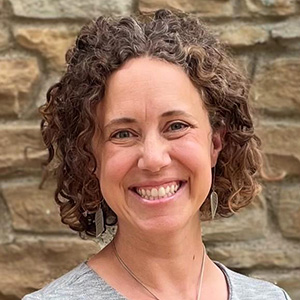Access to health care varies based on a person’s age, race, location and more. University of Minnesota School of Public Health Associate Professor Carrie Henning-Smith is a public health researcher who has studied health care access in both rural and urban communities. Henning-Smith shares her expertise in observance of National Public Health Week this April 4-10.

Q: How does access to public health and health care systems vary based on a person’s location?
Prof. Henning-Smith: Access to all sorts of resources depends on one’s location. That’s partly because of how resources are distributed on a federal, state and local level. It’s also because communities look different from one another on the basis of population density and distance to resources, including public health and health care systems. Those differences are especially apparent between rural and urban places. In general, rural residents have fewer public health and health care resources available to them, and have to travel further to access them.
Q: How does a robust public health and health care system impact overall community health?
Prof. Henning-Smith: Access to public health and health care is important for community health for a variety of reasons. For example, those systems can help to ensure that people have access to routine and preventive care, as well as to care in an emergency.
A strong public health system can also help in the case of a crisis, like the COVID-19 pandemic, to make sure that people have the information and tools they need to keep themselves and others safe. Other social drivers of health (e.g., housing, education, employment, access to food) also play a huge role in community health outcomes, but they cannot ensure good health on their own, without a strong public health and health care system.
Q: How can communities better support their public health and health care systems?
Prof. Henning-Smith: Community members are often the best experts on the challenges and strengths in their own area. Their voices should be included, and heard, in discussions about policy and resource allocation to make sure that their community’s unique needs will be met.
To support public health and health care, community members can advocate for them at the local, state, and federal level. It’s also worth noting that people working for public health and health care are community members themselves, and their perspectives should be valued.
Q: Do factors such as age and race impact access to public health and health care systems?
Prof. Henning-Smith: Yes, absolutely. Some of our largest public insurance programs – especially Medicare – are designed with age as a primary eligibility criterion. Age also impacts one’s access to education and employment opportunities, which, in turn, impact one’s access to and interactions with public health and health care.
As for race, structural and institutional racism impact where people live, what resources they have access to and how they are treated within various settings. Opportunities for good health and access to resources — including public health and health care — are not currently equally or equitably distributed.
Q: How does your work help improve the current public health and health care landscape?
Prof. Henning-Smith: The goal of my research is to advance health equity, especially for rural residents. I work to identify inequities and potential policy solutions in all of the work that I do, including addressing barriers to accessing health care and other public health resources.
Carrie Henning-Smith is deputy director of the University of Minnesota Rural Health Research Center and an associate professor in the Division of Health Policy & Management, University of Minnesota School of Public Health. Henning-Smith’s research focuses on social determinants of health, access to care, and aging and long-term care.
